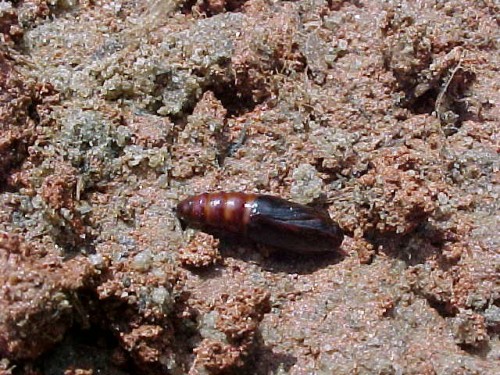

( left photo courtesy of University of Nebraska-Lincoln right photo courtesy of Marlin Rice, Iowa State University). The red arrow points to a white spot with crescent-shaped marking. Western Bean Cutworm Larvae (left photo courtesy of Montana State University, right photo courtesy of Marlin Rice, Iowa State University). Within 2 days, they turn tan and by the fifth day, turn dark purple. Eggs of the western bean cutworm are white, with a thin, red ring on top when first laid. The hindwings of the adults are unmarked and light colored. Further away from the body, in line with the spot, is a white, crescent shaped spot. Just below this stripe, and about halfway across each wingis a white spot. Forewings of the moth are brown with a white/creme-colored stripe that runs across the leading edge of each wing. Brown colored, moths are approximately ¾" long with a 1½" wingspan. Western bean cutworm larvae that are third-instar and older may be distinguished from other cutworms and caterpillars by three distinct stripes right behind the head. As the larvae mature, they become light tan to pink in color and the markings on their back become more distinct. Descriptionįirst-instar western bean cutworm are dark brown, with diamond-shaped markings on their back. It feeds primarily on corn ears, chewing and scarring kernels, predisposing the ear to fungal and mold infections.

Unlike other cutworms, the western bean cutworm is a late-season pest of corn.

The western bean cutworm is a severe pest of corn and dry beans, affecting both crop yield and quality. Growers in Illinois counties along the eastern border of Iowa should be aware of the potential for thiscorn insect pest to make its way into Illinois. Over the past several years, it has become established in Iowa and has moved steadily from west to east, having been discovered in southeastern Iowa in 2004. Historically, the western bean cutworm was only a pest in the western Corn Belt. IPM : Field Crops : Western Bean Cutworm (Loxagrotis albicosta Smith)ĭownload a printable version of this document (Adobe PDF, 268 kb)


 0 kommentar(er)
0 kommentar(er)
